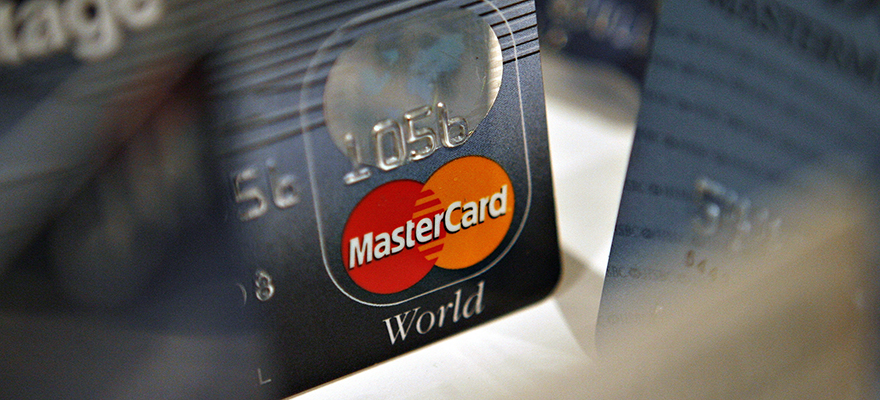Finance
Banks Tighten Terms for Credit Cards
Published
8 years agoon

- Banks Tighten Terms for Credit Cards
The second quarter credit condition survey has revealed that lenders tightened their credit scoring criteria for granting credit card loan applications in the second quarter of 2017, as part of risk management measures.
Owing to this, the proportion of approved credit card applications decreased.
But the survey of households, small businesses and corporate entities indicated increases in the availability of secured, unsecured and corporate credit to the aforementioned segments respectively.
According to the Central Bank of Nigeria’s Credit Conditions Survey Report for second quarter (Q2) 2017, lenders resolved to tighten the credit scoring criteria in granting overdraft/personal loan applications in the current quarter and decreased the proportion of approved household’s overdraft/personal loan applications in the current quarter.
Therefore, due to lenders’ resolve to tighten the credit scoring criteria for total unsecured loan applications in Q2, 2017, the proportion of approved total loan applications for households decreased in the quarter.
Lenders were expected to further tighten the credit scoring criteria in the next quarter, and were still of the opinion that the total loans applications to be approved in Q3, 2017 will further decrease.
“Lenders tightened the credit scoring criteria for granting credit card loan applications and the proportion of approved credit card applications to decreased in Q2, 2017.
“Lenders resolve to tighten the credit scoring criteria in granting overdraft/personal loan applications in the current quarter, decreased the proportion of approved household’s overdraft/personal loan applications in the current quarter.
“Lenders reported that spreads on credit card lending widened in Q2, 2017, but was expected to narrow in the next quarter. Spreads on unsecured overdrafts/personal loans on approved new loan applications widened in the current quarter and was expected to remain widened in the next quarter.
“The limit on unsecured credit cards on approved new loan applications decreased in Q2, 2017 and was expected to decrease further in the next quarter.
“The minimum proportion of credit card balances to be paid on approved new loan applications increased in the review quarter, and was expected to further increase in the next quarter.
“Maximum maturities on approved unsecured new loan applications were shortened in the current quarter, but were lengthened in the next quarter,” the report explained.
But demand for unsecured credit card lending from households increased in Q2, 2017 and was expected to increase in Q3, 2017 (Question 1a). Similarly, demand for unsecured overdraft/personal loans from households increased in Q2, 2017 and was expected to increase further in Q3, 2017.
Lenders experienced higher default rates on credit card and overdrafts/personal lending to households in the current quarter. They however, expect improvement in default rates in the next quarters. Losses given default on total unsecured loans to households improved in Q2, 2017 and were expected to improve further in Q3, 2017.
Credit for Corporates
The credit conditions in the corporate sector vary by size of the business. The survey asked lenders to report developments in the corporate sector by large and medium-size private non-financial corporations (PNFCs), other financial corporations (OFCs) and small businesses.
The overall availability of credit to the corporate sector increased in Q2, 2017 and was expected to further increase in Q3, 2017.
The report stated that the major factors contributing to the increase in credit availability were brighter economic outlook, favourable liquidity conditions, tight wholesale funding conditions, changing sector specific risk and increased appetite for risk.
Lenders reported that the prevailing commercial property prices negatively influenced credit availability of the commercial real estate sector in the current and next quarters.
Similarly, lenders expected the prevailing commercial property prices to negatively influence secured lending to PNFCs in the current and next quarters.
Small businesses were defined as those with an annual turnover of under N5 million. Medium-size corporates were defined as those with an annual turnover of between N5 million and N100 million, while large corporates were defined as those with an annual turnover of more than N100 million.
“Availability of credit increased for all sized business except the OFCs in Q2, 2017. Similarly lenders report credit availability for all sized businesses, except the large PNFCs and OFCs in the next quarter.
“Changes in spreads between bank rates and MPR on approved new loan applications to the small, medium, large PNFCs and OFCs widened in Q2, 2017. Conversely, spreads for all size business types is expected to narrow in the next quarter except for medium PNFCs.
“The proportion of loan applications approved for the medium and large size firms decreased in the current quarter and were expected to decrease further in the next quarter.
“Lenders required stronger loan covenants from all sized businesses in the current and next quarter,” it added.
Furthermore, the report showed that fees/commissions on approved new loan applications fell for all firm sized businesses in both the current and next quarters.
It also showed that all firm sized businesses except the small businesses did not benefit from an increase in maximum credit lines on approved new loan application in Q2, 2017. “Similarly, lenders expect that the small businesses and OFCs will benefit from an increase in maximum credit lines on approved new loan application in Q3, 2017.
“Lenders demanded more collateral requirements from all firm sizes on approved new loan application in Q2, 2017. Similarly, lenders will demand for more collateral from all firm sizes in the next quarter.
“Demand for corporate lending from small businesses, medium & large PNFCs businesses increased in Q2, 2017. They were also expected to increase in the next quarter. Demand for overdrafts/personal loans in Q2, 2017 were higher in comparison with other business types.
“The most significant factors that influenced demand for lending in Q2, 2017 were the increase in inventory finance and capital investment, and they were expected to remain the main driver in the next quarter,” it added.
Also, it showed that corporate loan performance as measured by the default rates improved for the large PNFCS and the OFCs businesses in the review quarter, while it deteriorated for the small businesses and medium PNFCs. Default rates on lending to all sized businesses was also expected to improve in the next quarter except on small businesses.
The average credit quality on newly arranged PNFCs borrowing facilities improved in Q2 2017 but was expected to deteriorate in Q3, 2017. The target hold levels associated with corporate lending improved in Q2, 2017 and was expected to improve further in Q3, 2017. Loan tenors on new corporate loans deteriorated in Q2, 2017 and were expected to deteriorate further in the next quarter.
Also, draw down on committed lines by PNFCs improved in the current quarter, but was expected to deteriorate in the next quarter.
Lending to Households
In the review quarter relative to the previous quarter, lenders reported an increase in the availability of secured credit to households. Lenders noted that anticipation of a brighter economic outlook; favourable liquidity positions, higher appetite for risk and tight wholesale funding conditions were major factors behind the increase. The availability of secured credit was also expected to increase in the next quarter with favourable liquidity positions as the major contributory factor.
“Despite lenders stance on tightening the credit scoring criteria in Q2, 2017, the proportion of loan applications approved in the quarter increased. Lenders still expect the credit scoring criteria to remain tightened in the next quarter and a further increase in the proportion of approved household’s loan applications in Q3, 2017.
“Maximum Loan to Value (LTV) ratios increased in the current quarter, but was expected to decrease in the next quarter. Lenders expressed their willingness to lend at low LTV ratios (75% or less) in both the current and next quarters. “However, they expressed unwillingness to lend at high LTV (more than 75%) in the current quarter and the next quarter. The average credit quality on new secured lending improved in Q2, 2017 and was expected to improve further in Q3, 2017.
“Lenders reported that the overall spreads on secured lending rates to households relative to MPR widened in Q2, 2017 and was expected to further widen in the next quarter. Widened spreads were reported for prime, buy to let and other lending in Q2, 2017 and Q3, 2017,” it stated.
Furthermore, households demand for lending for house purchase increased in Q2, 2017 but was expected to increase in the next quarter. Of the total demand, increase in households demand for prime and buy to let were reported. Demand for secured lending on the prime and buy to let were expected to increase in the next quarter.
“Households demand for consumer loans rose in the current quarter and is expected to rise in the next quarter, demand for mortgage/re-mortgaging and small businesses declined in Q2, 2017 but was expected to rise in Q3, 2017.
“Secured loan performance, as measured by default rates improved in Q2, 2017 and was expected to improve further in Q3, 2017. Similarly, loss given default improved in the current quarter and it is expected to improve in the next quarter,” the report added.
The availability of unsecured credit provided to households rose in the current quarter and was expected to further rise in the next quarter.
Lenders reported brighter economic outlook, lower cost/availability of funds and higher appetite for risk as factors that contributed to the increase in Q2, 2017.
Is the CEO and Founder of Investors King Limited. He is a seasoned foreign exchange research analyst and a published author on Yahoo Finance, Business Insider, Nasdaq, Entrepreneur.com, Investorplace, and other prominent platforms. With over two decades of experience in global financial markets, Olukoya is well-recognized in the industry.

You may like
-


Nigeria’s GDP Records 3.46% Growth in Q3 Spurred by Non-Oil Sector
-


President Tinubu Presents N47.9trn 2025 Budget As Debt Servicing, Security, Infrastructure Take Lion Shares
-


I’m Not Nigeria’s PR, UK Party Leader, Kemi Badenoch, Tells Shettima
-


Nigeria and France Forge Strategic Alliance to Boost Solid Minerals Sector
-


Zhongshang Fucheng Moves to Auction Nigerian Properties in UK Following $70M Arbitration Award
-


Nigerians and Indians Lead UK Job Market Growth Amid Post-Brexit Migration Shifts









